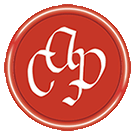Speaker
Fei-Chi Yang
(McMaster University)
Description
Proteins, chitin and keratin form the elementary building blocks of many biomaterials. How these molecules assemble into larger, macroscopic structures with very different properties is the fundamental question we are trying to answer [1].
Squid pen is a transparent backbone inside the squid, which supports the mantle of the squid. The pens show a hierarchical, self-similar structure under the microscope and the AFM with fibers from 500μm to 0.2μm in diameter. The chitin molecules form nano-crystallites of monoclinic lattice symmetry surrounded by a protein layer, resulting in β-chitin nano-fibrils. Signals corresponding to the α-coil protein phase and β-chitin were observed in X-ray experiments in-situ. The molecular structure is highly anisotropic with 90% of the α-coils and β-chitin crystallites oriented along the fiber-axis indicating a strong correlation between the structures on millimeters down to the molecular scale [2].
[1] “Self-assembly enhances the strength of fibres made from vimentin intermediate filament proteins”, N. Pinto, **FC. Yang**, et al., published by *Biomacromolecules*. DOI: 10.1021/bm401600a
[2] “Hierarchical, Self-Similar Structure in Native Squid Pen”, **FC. Yang**, et al., submitted to *Soft Matter*.
Author
Fei-Chi Yang
(McMaster University)
Co-authors
Hannah Dies
(McMaster University)
Prof.
Maikel Rheinstädter
(McMaster University)
Robert Peters
(McMaster)

